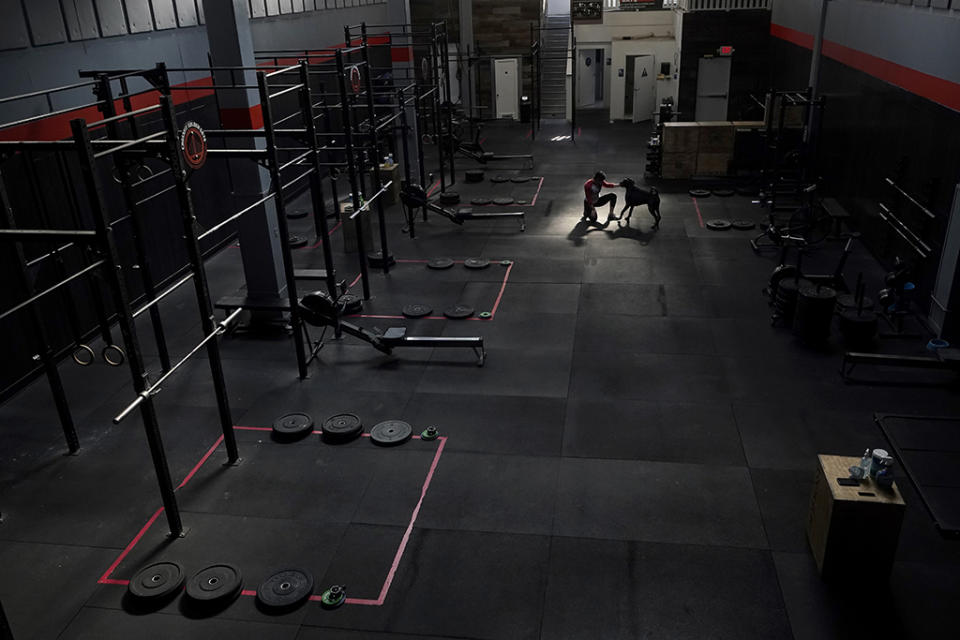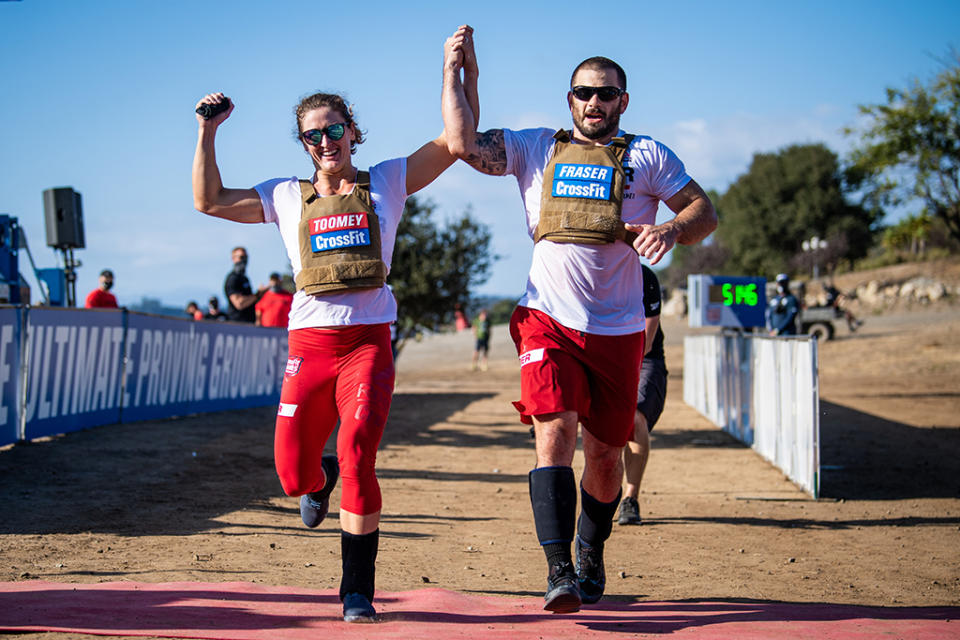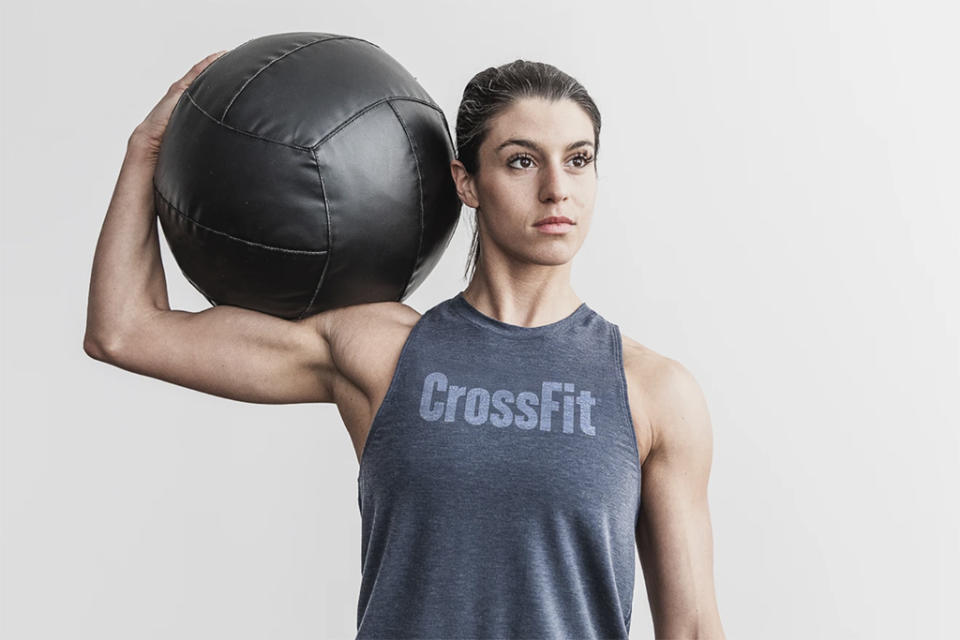CrossFit CEO Eric Roza on Why Nobull Is the Ideal Partner + Leading the Company in a New Direction

Although at the helm of CrossFit for just one year, Eric Roza’s leadership is already paying off.
Roza acquired the company in June 2020, not long removed from the resignation of former CEO Greg Glassman, who departed amid backlash stemming from an insensitive comment he made regarding George Floyd on Twitter.
More from Footwear News
Reebok and 'Jurassic Park' Team Up on Sneakers Inspired by Characters From the 1993 Movie
Victoria Beckham Drops New Reebok Running Shoes and Stylish Monochromatic Workout Sets
In the year since, Roza — who also serves as CrossFit’s CEO — has bolstered his leadership team, announcing the hiring of former Nike exec Jason Dunlop as president this month. CrossFit has also worked to help its athlete community, launching CrossFit Affiliate Programming last month designed to offer a better daily experience for gym owners, coaches and members. Additionally, the company is working to have an impact beyond its already engaged community, revealing the CrossFit Scholarship in June 2020, created to encourage health-care changes in underrepresented and underserved communities.
However, the most impactful move under Roza’s watch came in March when the company announced Nobull as the CrossFit Games title sponsor, as well as its official footwear and apparel sponsor. Nobull replaces longtime partner Reebok, which revealed in June 2020 that it was ending its relationship with CrossFit amid the Glassman controversy.
With the deal signed, CrossFit and Nobull are set to reveal the power of their partnership with the first marquee event together, the 2021 Nobull CrossFit Games, which will take place from July 27-Aug. 1 in Madison, Wis.
Below, Roza revealed to FN why Nobull was the right partner for CrossFit, how the brand is aiding its affiliate gym base that was shaken by COVID-19 and why his approach to leadership differs from the prior regime.
How much of the CrossFit affiliate gym base was decimated because of COVID?
“It’s a pretty significant number. We would estimate it’s in the 20-25% range, not just for CrossFit but for the industry. Some may come back when we get into the fall because it is a little bit of a seasonal business, membership numbers ebb a bit in the summer in most parts of the country. We expect some to come back, but given the debt load, it’s still an uphill battle.”
How has CrossFit supported the affiliate gyms?
“We’ve been spending a lot of time on lobbying efforts with Congress; we have about 150 folks in the House supporting industry-specific relief for independent gyms. That’s been a huge part of our effort. [Affiliate gyms] pay us a very small percentage of revenue, so anything we could do in terms of handouts would not be that meaningful. What we did is galvanize the industry in hoping to get Congress behind this [Gym Mitigation and Survival (GYMS) Act].”
How can you restore the gym base as the country starts to reopen?
“We have reached out to thousands of affiliate gyms that have either shut down or gone radio silent with us and offered support to them. Financial support is not the primary currency that we can offer these guys because they pay us such a small portion of revenue — our affiliation fee is $3,000 a year — and if you’re a gym making a few hundred thousand dollars a year, it’s hard for us to offset that. One thing we’ve done that’s been effective is we’ve done roundtables with our gym owners. They were never in touch with each other previously unless they knew people, but now we have created groups that get together and chat a couple times a month. We had over 500 people in the pilot and we’ll have over 1,000 as we roll out. They give each other support and trade tips on how you negotiate with your landlord and what campaigns to run to get members to feel safe and that it’s important to come back to the gym. A lot of it has been disseminating best practices among the gyms themselves.”

AP Photo/Jeff Chiu
Where did CrossFit need an overhaul when you acquired the company?
“The relationship with athletes was something we focused on early, and the relationship with affiliates was the most important one to us, and also the internal team. It’s not fun to give your life to something and then be pilloried in the press. That team was not feeling like they were winning, so we spent a lot of time on internal culture stuff. That involved a ton of communication and transparency about where we actually were and where we’re actually going. We were able to get 100% of the Games’ athletes who announced they were boycotting back, and over time we’ve brought back about 2,000 affiliates as well.”
Looking ahead, where will the CrossFit community most see your new direction?
“It’s being actively engaged. That’s a big difference in philosophy. Mr. Glassman definitely was partial to a laissez faire model, and for us, we’re interested in disseminating best practices because if one part of the ecosystem figures something out, we want to share that with others. We’ve hired a lot of people — the team is 50% bigger than when we acquired the company, in spite of COVID. Last week, we launched a service called CrossFit Affiliate Programming, and CrossFit had never had a hand in how each gym was programming their workouts. There was a workout posted every day on CrossFit.com, but that was primarily aimed at people in their garages, and what we found was few gyms used it. And it didn’t tell you how to coach the workout. We have this mantra ‘Tools Over Rules,’ and because we have a gym member base that’s highly entrepreneurial, they don’t like to be told what to do, so we have to be clear that we’re not telling you that you have to use this programming, but if you want to, we’re going to provide it for free for the next six months, and you’re going to get detailed information on what the workout is and how to coach it and how to organize the class. It’s been about a week and we have 2,500 gyms signed up for the waitlist. There’s pent up demand for more help from us. Another area is training coaches — roughly one-third of our revenue comes from certifications. During COVID, we launched the ability for trainers to get their credential online, and within a few months we had 1,000 people a month signing up for the online training class. Also, we’ve been testing a product called OnRamp, which is a way to help people who aren’t yet comfortable walking into a CrossFit gym get comfortable with the movements so they can then go into a gym and realize you don’t have to be fit to go into a gym. We’ve had some good testing with that and you’ll see that roll out in the fall.”

Courtesy of CrossFit
Reebok parted ways with CrossFit before you assumed control. Did you engage in talks with Reebok to remain a partner?
“I was fortunate that I knew the [president] of Reebok, Matt O’Toole. The first thing that happened when we did the buyout [of CrossFit] last summer, I reached out to him and we had a number of great conversations. That resulted in them retaining the sponsorship of the Games last year. There was a 10-year deal that was coming to a head with Reebok at the end of last year, and it was no secret that Adidas was engaged in the process of looking for a new buyer for Reebok, so we thought about other options. I had known the Nobull guys since very early and loved the brand. I loved the shoe and the styling, but also the authenticity and the fact that it grew up in CrossFit, so we rapidly started to talk about Nobull as a future partner.”
Did Reebok express an interest in keeping the partnership going?
“Matt and I talked about it and I said, ‘We’re probably going to go in a different direction,’ and he was gracious about it. He said, ‘If you don’t, then less talk.’”
Almost every major athletic brand has a CrossFit shoe on the market. How, if at all, did that impact your decision-making process?
“We thought, ‘Would we have more leverage if we wait a year?’ People were still taking a risk as the reputation fully recovered, so we were fully cognizant that we might have more leverage if we waited another year. But I had a lot of conviction around Nobull as the partner. I love their nimbleness and that I had a friendship with the founders, not just a business relationship. When I met them, I had an interest in investing in them, so they knew I was a bit of a fanboy. I loved that they were a direct-to-consumer play, they were e-commerce forward. The fact that they were digitally-native, really good at direct marketing and native to CrossFit with styling I really liked, made it the right decision for us. But we talked to all the usual suspects and made sure we were leaving no stone unturned.”

Courtesy of Nobull
What does Nobull offer to CrossFit that no other brand in the space could provide?
“They obviously have expanded beyond CrossFit, but CrossFit is at their core. They were founded by CrossFitters, they totally get what we do and have complete integrity. They’re not coming to CrossFit; they were founded out of a desire to make a CrossFit shoe. It’s true authenticity, not feigned authenticity.”
In a year, you have already signed notable deals with Nobull, Whoop and Thorne. Where do you see opportunity to bring on other partners?
“It’s an incredibly wide range, and we’re announcing new ones. There’s a big healthcare company we’re going to be announcing shortly. Anything you can think about that is part of a healthy, active lifestyle is going to be part of the brands we’re looking at to support CrossFit. When it comes to the Games and the sport of CrossFit, you’ll see non-endemic brands like the U.S. Army and Dodge Ram trucks. They’re non-endemic but they are interested in, and interesting to, our ecosystem.”
Sign up for FN's Newsletter. For the latest news, follow us on Facebook, Twitter, and Instagram.

